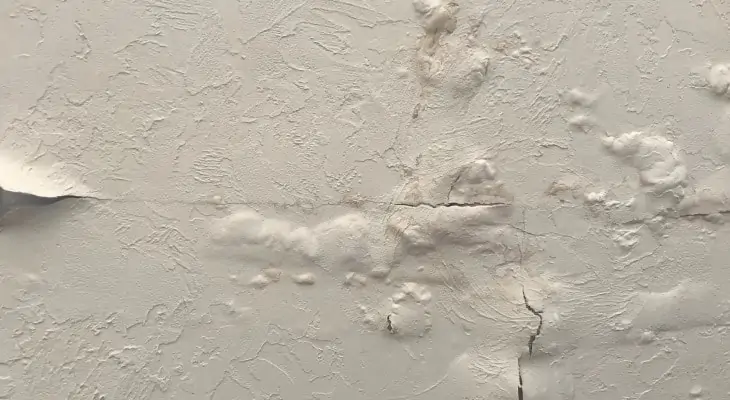Discovering a water bubble in your ceiling can be an alarming sight, leaving you wondering about the best course of action. Your first instinct might be to pop the bubble, but is that a safe and effective solution? In this article, we’ll delve into the reasons behind pop a water bubble in ceiling, the potential risks of popping them, and alternative steps to address the issue.

Understanding Ceiling Water Bubbles
What Causes Water Bubbles?
Water bubbles in the ceiling are typically the result of water leakage from a source above. Common causes include:
- Roof Leaks: Damaged or aging roofing materials can allow water to infiltrate your home, leading to ceiling bubbles.
- Plumbing Issues: Leaking pipes or plumbing fixtures can also be a source of water intrusion.
- Condensation: In some cases, condensation buildup within the ceiling can form bubbles.
- High Humidity: Areas with high humidity levels may experience ceiling bubbles as moisture is absorbed by the ceiling material.
Should You Pop the Water Bubble?
The Risks and Considerations
Popping a water bubble in the ceiling may seem like a quick solution, but it comes with several risks:
- Structural Damage: Popping a bubble can cause further damage to the ceiling structure and even the surrounding areas.
- Hidden Issues: The bubble itself is often just a symptom of a more significant problem, such as ongoing water damage. Popping it may not address the underlying issue.
- Mold Growth: Opening the bubble can release trapped moisture, potentially promoting mold growth within the ceiling.
- Safety Concerns: Attempting to pop a bubble can be hazardous, especially if the ceiling material is saturated and weakened. It can lead to injury.
Alternative Steps to Address Ceiling Water Bubbles
Safe and Effective Solutions
Rather than popping a water bubble in the ceiling, consider the following steps:
- Assessment: Determine the source of the water leakage and address it. If the issue is due to a roof leak or plumbing problem, it’s crucial to fix those first.
- Drainage: If the bubble is large and at risk of bursting, carefully drain it by puncturing a small hole at the lowest point. Use a bucket to catch the water to avoid further damage.
- Ventilation: Ensure proper ventilation in your home to reduce humidity levels, especially in areas prone to condensation and moisture buildup.
- Ceiling Inspection: After draining the bubble, inspect the ceiling for signs of damage. Depending on the extent of the damage, repairs may be necessary.
- Professional Help: If the issue is extensive or you’re uncertain about how to proceed, it’s advisable to seek professional assistance. Roofing contractors, plumbers, or water damage restoration experts can help identify and address the problem effectively.
Preventing Ceiling Water Bubbles
Proactive Measures
The best approach to dealing with water bubbles in the ceiling is to prevent them from occurring in the first place. Consider these preventive measures:
- Regular Inspections: Conduct routine inspections of your roof, plumbing, and ceilings to catch potential issues early.
- Maintain Roofing: Ensure your roof is well-maintained, with regular inspections and repairs as needed.
- Address Plumbing Issues: Promptly repair any plumbing problems to prevent leaks that could lead to ceiling bubbles.
- Humidity Control: Use dehumidifiers and ensure proper ventilation in areas with high humidity, like bathrooms and kitchens.
- Roof Overhangs: Install roof overhangs to divert rainwater away from the walls and ceilings.
Conclusion
Discovering pop a water bubble in your ceiling can be concerning, but popping it is not a recommended solution. The risks of further damage, hidden issues, mold growth, and safety concerns outweigh the potential benefits. Instead, it’s essential to identify and address the root cause of the problem, whether it’s a roof leak, plumbing issue, or condensation. By taking proactive measures and seeking professional help when needed, you can prevent ceiling water bubbles and maintain the integrity and safety of your home.